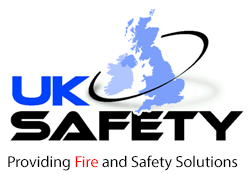Working at height remains leading cause of workplace deaths
Each year, the Health and Safety Executive releases its annual tally of fatal injuries sustained in British workplaces, providing vital data and guidance to help employers reduce the risks in their own workplaces. This year has seen a number of notable trends occurring with the figures, which have likely been at least partially influenced by the Covid-19 pandemic. It’s a very detailed report, so we’ve summed up some of its key findings below. (Unsurprisingly, it still heavily underlines the importance of working safely at height.)
What are the key findings of the report?
There were 111 people killed in the workplace in 2019/20, according to data collected through RIDDOR. Notably, this marks a drop in 38 fatal injuries from the previous year, and in fact it’s the lowest annual number on record. Since 2015/16, the annual average over the last few years has been 137, so 111 is quite a significant decrease.
The HSE has taken care to note that these statistics can be prone to year-on-year fluctuations, so some variance is to be expected. It’s likely that the Covid-19 pandemic influenced the figures to at least some degree, although it’s difficult to measure the extent of its effect. The HSE has said that partially due to both these factors, the drop in figures might not necessarily be indicative of any dramatic change in overall workplace safety across the UK.
Most industries have recorded a lower death toll than average over the past few years. The exceptions are the construction sector, and administration and support services, both of which have slightly exceeded their average.
Across all industries, the statistics noted:
- 40 deaths in construction (recent annual average: 37)
- 20 deaths in agriculture, forestry and fishing (recent annual average: 27)
- 15 deaths in manufacturing (recent annual average: 20)
- 11 deaths in transportation and storage (recent annual average: 14)
- 6 deaths in wholesale, retail, motor repair, hospitality (recent annual average: 9)
- 5 deaths in waste and recycling (recent annual average: 9)
- 6 deaths in administrative and support services (recent annual average: 4)
Notable sector trends
As you can see from the figures above, construction remains the UK’s deadliest sector (accounting for nearly a third of workplace deaths) with agriculture, forestry and fishing following closely behind, itself accounting for 20% of worker deaths.
The death rate in the manufacturing sector is towards the lower end of its average established over the last few years, but hasn’t hit record-breaking lows just yet. At the moment, it’s about the same level as it was in 2017/18. Meanwhile, the transportation and storage sector accounts for about 10% of all workplace fatal injuries.
Although agriculture, forestry and fishing recorded the lowest number of fatal injuries this year, there’s also another way of looking at the data, which is to examine the fatal injury rate in terms of the number of fatalities per 100,000 workers employed. In these terms, the year-on-year trends from HSE show that agriculture continues to be one of the sectors with the worst fatal injury rate (alongside waste and recycling). Together, they both have a fatal injury rate about 18 times as high as the average across other industries.
